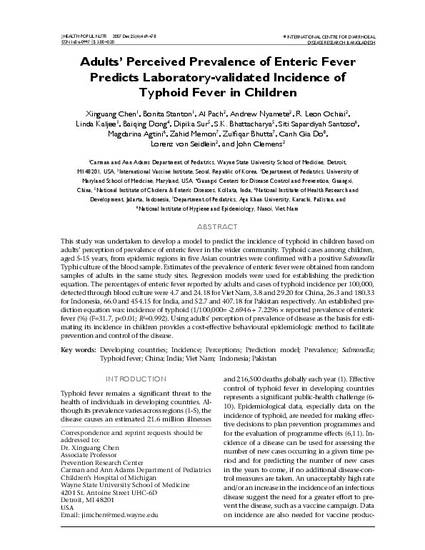
This study was undertaken to develop a model to predict the incidence of typhoid in children based on adults’ perception of prevalence of enteric fever in the wider community. Typhoid cases among children, aged 5-15 years, from epidemic regions in five Asian countries were confirmed with a positive Salmonella Typhi culture of the blood sample. Estimates of the prevalence of enteric fever were obtained from random samples of adults in the same study sites. Regression models were used for establishing the prediction equation. The percentages of enteric fever reported by adults and cases of typhoid incidence per 100,000, detected through blood culture were 4.7 and 24.18 for Viet Nam, 3.8 and 29.20 for China, 26.3 and 180.33 for Indonesia, 66.0 and 454.15 for India, and 52.7 and 407.18 for Pakistan respectively. An established prediction equation was: incidence of typhoid (1/100,000= −2.6946 + 7.2296 × reported prevalence of enteric fever (%) (F=31.7, p2=0.992). Using adults’ perception of prevalence of disease as the basis for estimating its incidence in children provides a cost-effective behavioural epidemiologic method to facilitate prevention and control of the disease.
Available at: http://works.bepress.com/zahid_memon/3/

This work was published before the author joined Aga Khan University.